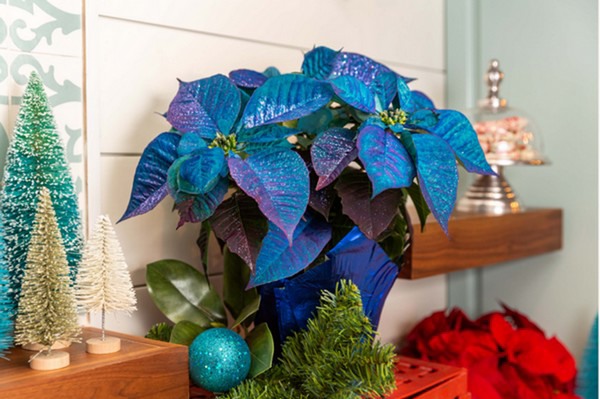For Metrolina Greenhouses, the poinsettia shipping season is over. Last week, on December 9, the final poinsettias left the greenhouses. So it’s time to reflect. Abe VanWingerden, co-CEO at the nursery, with U.S. operations in Huntersville - North Carolina, and York - South Carolina, tells us more about this year’s demand, challenges, and the big increase Metrolina sees in their Direct-to-Consumer (DTC) business.

Season
Metrolina Greenhouses produces poinsettias in 180 acres – 8 MM square feet – of its heated greenhouse space production. Metrolina typically starts shipping poinsettias around November 10 each year, and sales happen all the way through December 24, with the last week in November and the first week in December considered as the peak weeks. “Except for any special orders (churches/organizations), we like to be completely shipped by December 10, so our teams have time in the store to focus on selling. We finished this year on December 9.”

Demand – flattened out after two years of increase
Over the last two years, the demand for poinsettias increased significantly, but it flattened out this year, explains VanWingerden. “Poinsettia demand was up 18% in 2020 and up 17% in 2021. It flattened out this year as we held onto the 2020 and 2021 sales gains, but we did not expand the market further this year.”
Prices higher – not affecting demand
When talking about the prices, VanWingerden tells us that they did go up, but the increase did not seem to detract the consumer. “As has been typical in live goods this year, poinsettias prices were up at most stores. We see that the overall average price went up around 7% to 8% this year across most sizes. This did not seem to detract the consumer, as most of the best sizes this year were mid to large-size poinsettias.”

iPainted blue poinsettia
Popular poinsettias
The traditional red poinsettia is still the most popular, but over the years, VanWingerden has seen other colors and combinations growing in demand. “Painted poinsettias, specifically Blue, had another strong year and continue to grow faster than the category ‘average.’ While still a niche item, it has had staying power as we find the right colors to drive. Additionally, Red and White Mixed poinsettias (both a red and a white in the same pot/combo) continue to grow as a percentage of the mix, especially in larger sizes. Lastly, the foliage bowl combination (a poinsettia surrounded by four of five foliage plants in a container bowl) continues to grow as part of the mix. This was a 50,000-unit program in 2017 and now is a 200,000-unit program for us in 2022.”
 On the left: Red and White Mixed. On the right: Foliage bowl combination.
On the left: Red and White Mixed. On the right: Foliage bowl combination.
Challenges
One of the main challenges this year has been the weather, VanWingerden explains. “While you would not expect it to highly impact poinsettias like it would spring items, we did have very gloomy, rainy, and cloudy weather this year, compared with any other year in the past five years. That has impacted traffic to the stores, especially the home improvement chains.” The other challenge was that they had to readjust their forecasts. “After two years of great growth, we had to readjust forecasts to match flat sales this year.”
 Red and White Mixed poinsettias in the greenhouse.
Red and White Mixed poinsettias in the greenhouse.
Big increase in DTC business on poinsettias
Metrolina Greenhouses also ships to consumers directly by fulfilling orders through their retail partners’ websites. This year, they have seen a big increase in their Direct-to-Consumer (DTC) business on poinsettias. “It went up by 98.2%! Here, consumers buy from our retailer websites and then have the product shipped directly to their homes. This program will continue to build and has become another outlet to sell poinsettias.”
Photos are courtesy of Metrolina Greenhouses.
For more information:
Metrolina Greenhouses
www.metrolinagreenhouses.com
